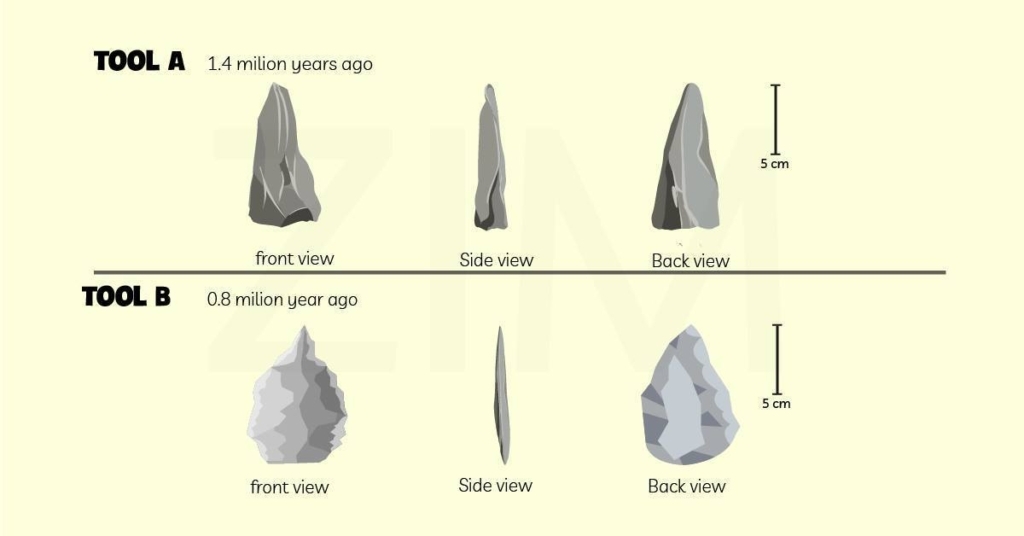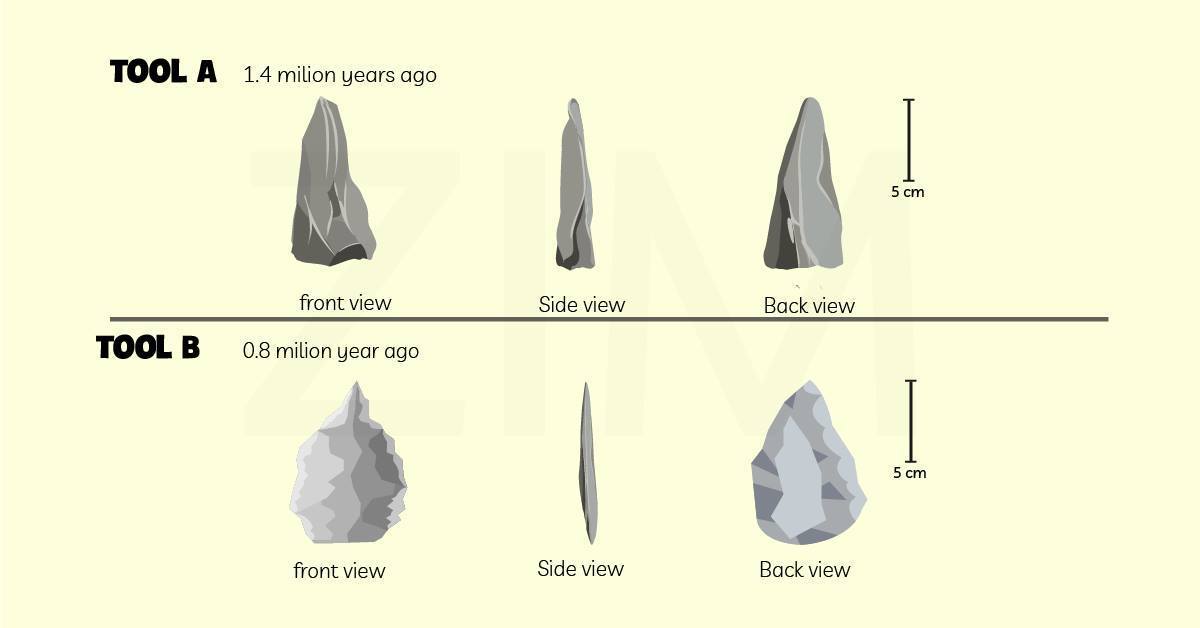The diagram below shows the development of the cutting tool in the Stone Age
Uncategorised
The diagram below shows the development of the cutting tool in the Stone Age là đề được các bạn kháo nhau đợt vừa rồi, và hầu như là đều khóc thét về độ khó của nó.
Trong bài viết này, sachphotos.com sẽ tổng hợp lại bài giải của một số bên khá nổi tiếng, các bạn tham khảo và đánh giá xem trung tâm nào viết hay hơn nhé. Đây cũng là 1 nguồn cho các bạn đánh giá các trung tâm IELTS nè.
Tham khảo thêm: viết mô tả biểu đồ dạng process
The diagram below shows the development of the cutting tool in the Stone Age bài mẫu:
The diagram illustrates the evolution of the cutting tool during the period from 1.4 million years ago to 0.8 million years ago in the Stone Age.
It can be seen that a number of upgrades were made in the shape and size of the tool so that it could become a more effective cutting instrument.
1.4 million years ago, the tool was relatively primitive and resembled a natural stone, which suggests that little crafting was done. From the front and side view, Tool A had an oval shape, rough surface and blunt edges, hence presumably the inferior version compared to Tool B.
After 0.6 million years, the tool was upgraded into a spear-shaped instrument with the tip and edges being much sharper. While Tool B was 10 centimeters long – the same length as Tool A, the surface of Tool B was crafted to be smoother and the overall width to be larger. Therefore, these features rendered this version more superior in terms of cutting efficiency.
165 từ
The pictures describe the evolution of Stone Age cutting tools between 1.4 million and 0.8 million years ago. It can be seen that the latter design had seen vast improvements in the size, shape and finishing quality.
Tool A, which dated back to 1.4 million years ago, was rather small and rudimentary. At about 7cm in length, the tool was thin and did not display much craftsmanship. The front and back view were plain with only some slight chiselling effort while the side was rough and not very indicative of a cutting utensil.
Tool B showed many updated features compared to the older version. First of all, it was larger and sturdier due to a better water drop design with a broad base and pointy top. Second, both front and back sides were grounded more evenly and smoothly. Finally, although the tool’s thickness stayed relatively the same after 0.6 million years, the side edge was undoubtedly much more finely sharpened.
The diagram shows how the cutting tool in the Stone Age were advanced. Overval, the stone tool, after 0.6 million years, was developed into a more refined and sharper for cutting.
From the front view, the stone tool made 1.4 million years ago was blunt and 10 cm in length. It was also wider in the middle and more rounded at the top and bottom edges. As can be seen from the side view, it also was pointed at the distal ends. The back view shows that the stone was not very refined with fewer cuts and was rock similar than the later one.
0.6 million years later, the tool was extensively shaped than before. Although there had been no change in the length as shown in the front and rear side, it had become bigger as leaf-shaped with a sharp tip. From the side view, the tool was sharpened and much lesser in width than the previous one.
The pictures describe the cutting tools created by our ancestors at two different ages.
Tool A was made approximately 1.4 million years ago. It was like an animal tooth about 8 cm long with a rough surface. It may be easy to hold but it was barely sharp enough. As is shown, the front part of the cutting tool was rather broad, and its top area was a little smaller than the bottom. Seen from the side, it was just as narrow as a stick. Moreover, the back part was much flatter than the front part.
Tool B was widely used 0.8 million years ago. Both of the two tools were made of stone. However, Tool B had been better developed than the previous one. It was about 12 cm long. Its front part had been smoother with many little points, which made it similar to the surface of a diamond. Observed from the side, it had got a very acute top, which was very useful for slicing meats. In addition, the back part was even much flatter than that of the older tool.
Trong các bài viết trên, bạn thấy bài viết của bên nào hay nhất?


